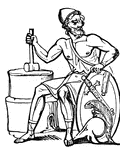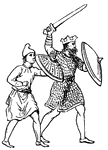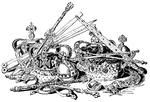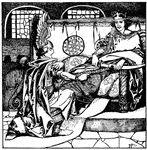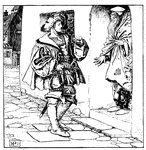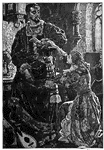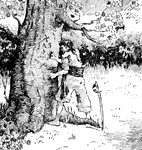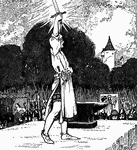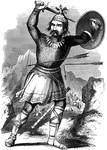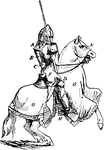
Swordfish
The swordfish is found in every part of the Mediterranean Sea. Its "sword" is an elongation of the upper…
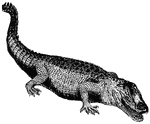
Crocodile
The body of the crocodile is covered with thick horny scales, so strong that they can resist the blow…

Horseshoe Crab
Horseshoe crabs represent an order called Xiphosura, from the fact that the end of the abdomen is furnished…
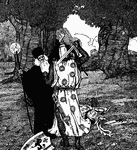
Merlin Saves Arthur
Arthur is about to be slain by the great Knight Pellinore but as he raises his sword against Arthur,…
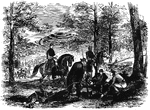
Battle of Corrick's Ford
"Battle of Carrick's Ford, Western Virginia- discovery of the body of General Garnett, by Major Gordon…

Battle of New Berne
"Battle of New Berne- Lieutenant Hammond capturing Colonel Avery, of South Carolina, while he was endeavoring…

Butchering Cattle
"Butchering and dressing cattle for distribution to the Federal Army. The romance and reality of life…
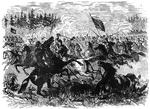
Hand-to-hand Combat
"Desperate hand-to-hand combat between Federal cavalry, commanded by General Averill and the daring…
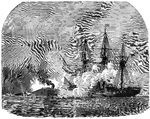
Mobile Harbor
"Farragut's naval victory in Mobile Harbor. The Hartford engaging the Confederate ram Tennessee.…
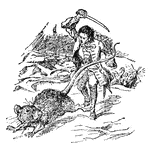
Gulliver with Large Rat
Gulliver draws his sword to defend himself against a giant rat in Brobdngnag.

Billy Wilson Zouaves
"The ('Billy') Wilson Zouaves, at Tammany Hall, taking the oath of fidelity to the flag, April 24th,…
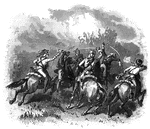
Tarleton encounter
"The encounter between Tarleton and Colonel Washington."—E. Benjamin Andrews, 1895
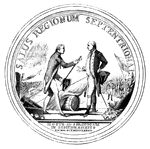
Gates Medal
Medal struck in honor of General Gates and his army. On the reverse side, Burgoyne is represented in…
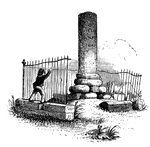
Wolfe's Monument
Wolfe's Monument. Since 1848, the remains of this monument have been removed, and a column forty feet…
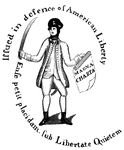
Treasury Note
"Reverse of a Massachusetts Treasury note. This is a fac simile of the device on the back of one of…

Society of the Cincinnati
"Society of the Cincinnati, member's certificate. This engraving is a fac simile of a certificate, about…
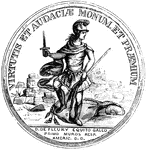
De Fleury Medal Front
"Medal awarded to Lieutenant-colonel De Fleury. This is a representation of the medal, the size of the…

Silvery Hairtail
"Two to four feet long, of a shiny silvery color; called ribbon-fish on our coast, and sword-fish…

Spotted Gunnel
"Or butter-fish, so called on account of the mucous secretion with which its sides are covered; it is…

Morgan Medal Front
"Gold medal awarded to Morgan. The following are the devices and inscriptions upon the front of the…
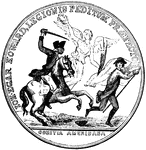
Howard Medal Front
"Silver medal awarded to Colonel Howard. The following are the device and inscriptions upon the front:…
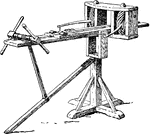
Catapult
"Catapult from the Roman military system. The Roman army was divided into legions, each of which contained…
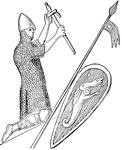
William the Conqueror
"William the Conqueror (1066-1087), as represented on his seal. Although William really ruled 'as king…

Flea
"Aphaniptera includes the fleas, which, despite their minuteness, have made themselves a name in the…
Filipino Bolo
"A Bolo is a short, broad, lance-shaped weapon; used by the Filiinos in their operations against the…

Filipino Bolo Sheath
"A Bolo is a short, broad, lance-shaped weapon; used by the Filiinos in their operations against the…

Armor
"Complete suit of Plate-Armor, now in Paris, date about 1440- the epoch of greatest perfection of defensive…
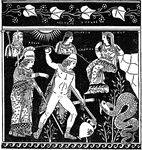
Cadmus and the Dragon
"Cadmus and the Dragon. (From a vase-painting at Naples.)" — The Delphian Society, 1913
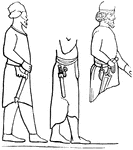
Acinaces
"A Persian sword, whence Horace speaks of the Medus acinaces. The acinaces was a short and…

Arma
"Homer describes in various passages an entire suit of armour, and we observe that it consisted of the…

Arma
"Homer describes in various passages an entire suit of armour, and we observe that it consisted of the…

Swordfish
"Swordfish is a popular name for any individual of the Xiphiidæ. They are pelagic fishes, widely…

